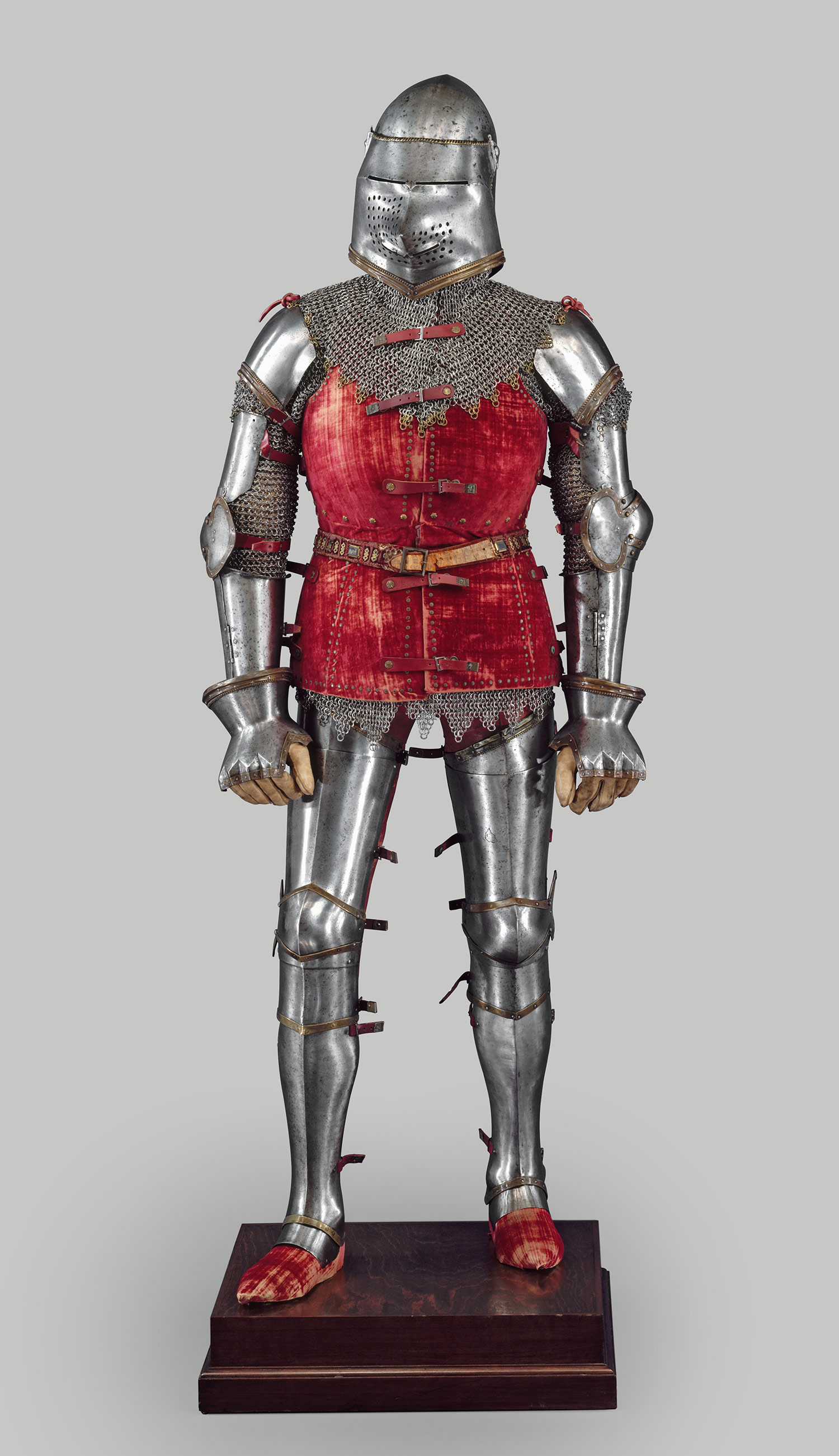Until the 15th century, the overwhelming evidence for maille underneath the torso protection is a full haubergeon (think a hauberk that's about mid-thigh, 3/4 sleeves or so). There are some inventories that refer to 'sleeves' of maille, but no one really knows what these are exactly.
The thing to be careful of with splint is sometimes the armorer cheats and only puts in 50% of the splints because it still gives the right visual on the outside. Any splinted armor should have 100% steel coverage of overlapping splints with no gaps on the inside otherwise it will not function as armor properly. Unless of course you're willing to take the risk of someone stabbing through the leather where it's gapped on the opposite side

Other details you can't see in those photos are things like the fans on the elbows and knees. Certain sizes and shapes are appropriate for different time periods, so you have to be careful with the little details. Even things like rivet heads matter. In the 14th century rivet heads tended to be countersunk and sat flush to the armor's surface to prevent blades from catching. Later on in the 15th century rivet heads sat proud and became more decorative... you can go crazy trying to get all the details right. But the key is research, research, research...
That cuirass is ok, with the exception of the faulds. They made the fatal mistake of copying a reproduction and not an original piece. No fauld exists or is depicted anywhere with vertically oriented lames hanging down over the hips. All extant and depicted faulds are horizontally overlapping lames. This is because you need to be able to sit down, especially on a horse. The fauld in your linked photo cannot collapse when you sit.
They copied the fauld from the Bashford Dean harness in the Met on this cuirass. Bashford Dean was the curator of the Met Arms and Armor collection and took liberties with that piece because there was no fauld with it and he designed it himself. It's a notorious piece of armor, and you can immediately tell when someone copied it because it's the only piece like it. Note how on the linked effigy the fauld is horizontally oriented and thus collapses on itself when you sit down unlike the one you linked.
Here's the photo of the piece from the Met:

A real fauld on a 14th and early 15th century cuirass should look like this:
